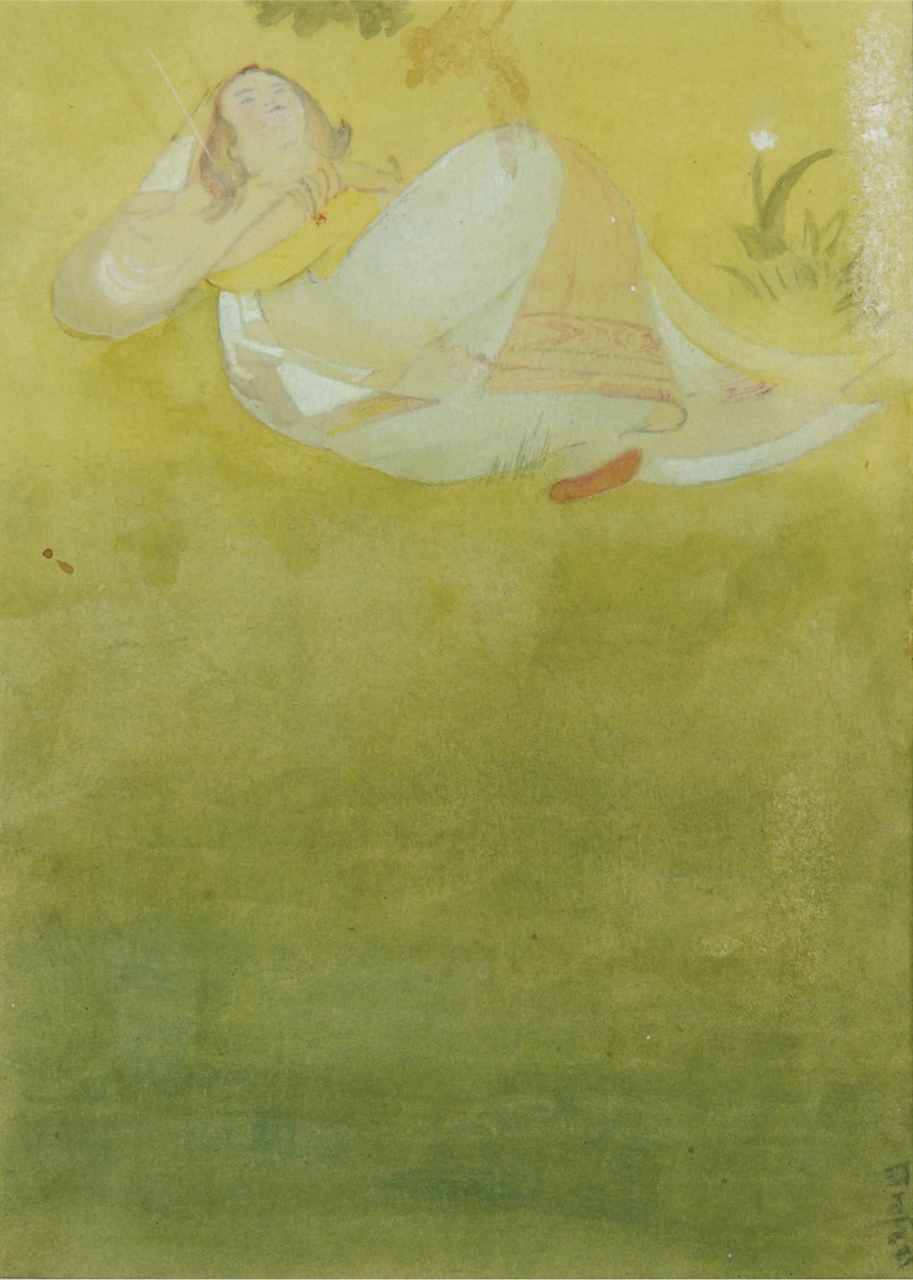![]() Modern & Contemporary Indian Art II
Modern & Contemporary Indian Art II
![]() Modern & Contemporary Indian Art II
ABANINDRANATH TAGORE (1871 - 1951)
Modern & Contemporary Indian Art II
ABANINDRANATH TAGORE (1871 - 1951)
RELATED LOTS
CONTACT US
Catalogue & Viewing
Lot Closed
Accounts & Shipping
Lot Closed
-
Literature
 Literature
Literature

In the early twentieth century, an emerging educated middle class in Bengal strove to rise above internal divides and tackle issues of identity and self-representation. The movement, apparent in the visual, performance and literary arts, was headed by different members of the Tagore family. Among the many branches of this movement, Abanindranath Tagore is credited with the creation of the Revivalist approach in painting, which sought to displace established conventions of colonial art and substitute it with a new visual language that could better identify with Indian sensibilities.
Abanindranath took pictorial and thematic inspiration from Indian literature, the Mughal and Rajput miniatures and Ajanta murals, and technical inspiration from far-eastern art to create a mode of painting that was poetic and emotional. Much debated and criticized as backward-moving and sentimental, the short lived movement however had far reaching effects in terms of style and technique in the later works of Bengal artists. At the time, several of his students, both at the Govt. College of Art and Craft, and later at the Indian Society of Oriental Art, followed the style implicitly (even though many later experimented with other modes) and went on to become heads of art institutions all over India. B.K. Sarkar termed the phrase 'Aban Panthis' meaning 'followers of Abanindranath' for all these students among whom were Asit Kumar Haldar, Kshitindranath Mazumdar, K. Venkatappa, Nandalal Bose, Samarendranath Gupta and several others.
-
Notes
 Notes
Notes

National Art Treasure: Non Exportable



